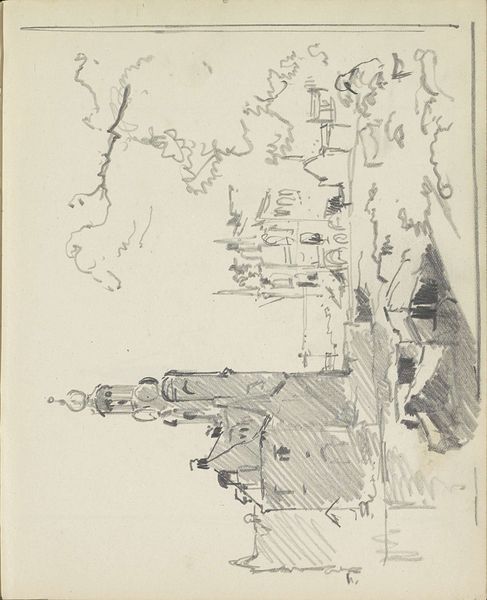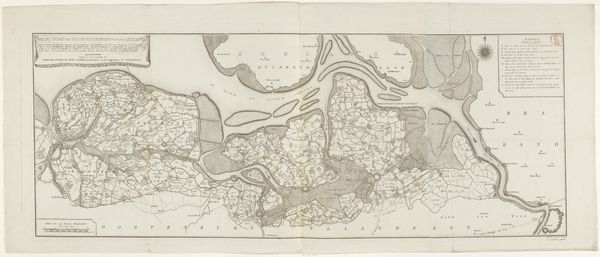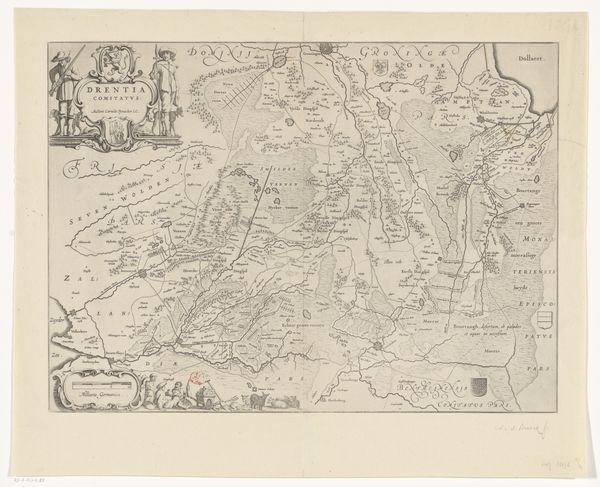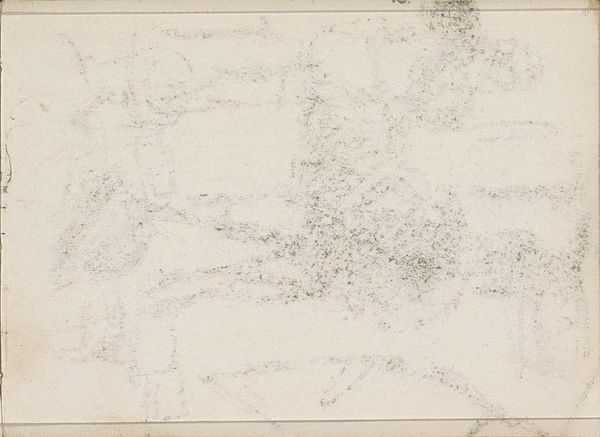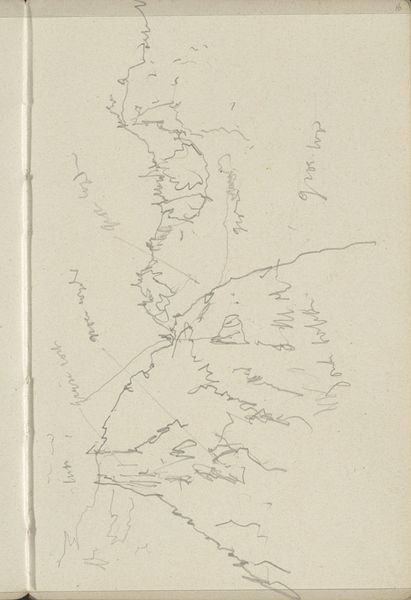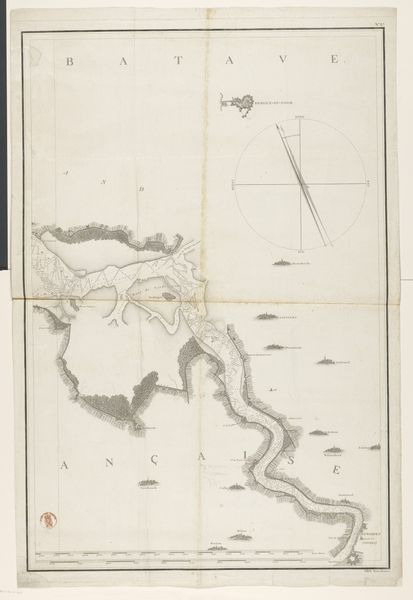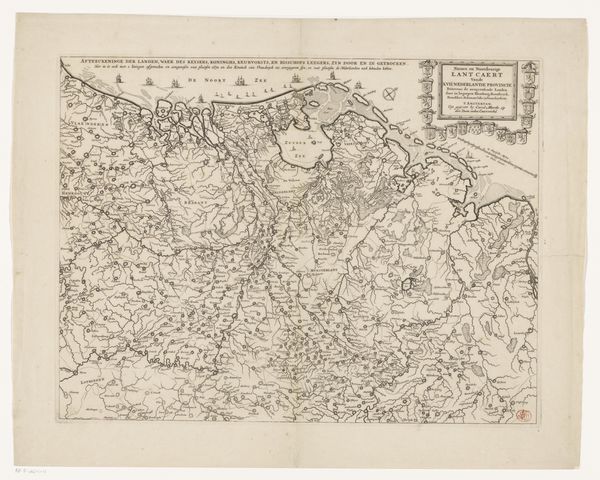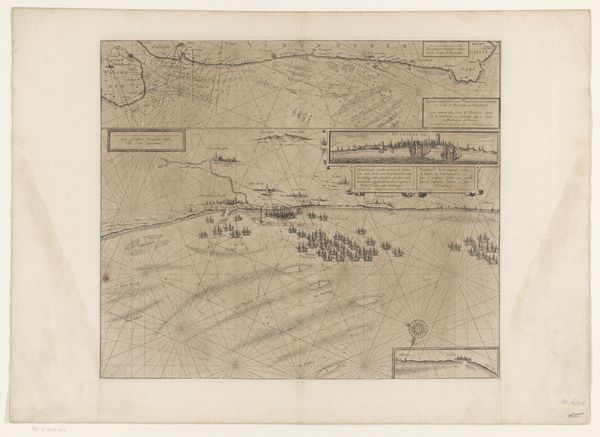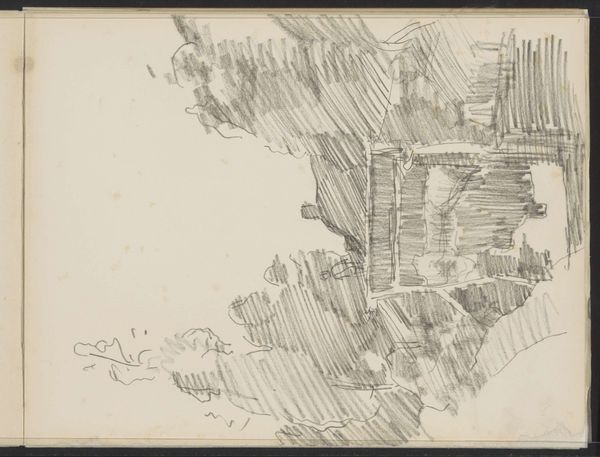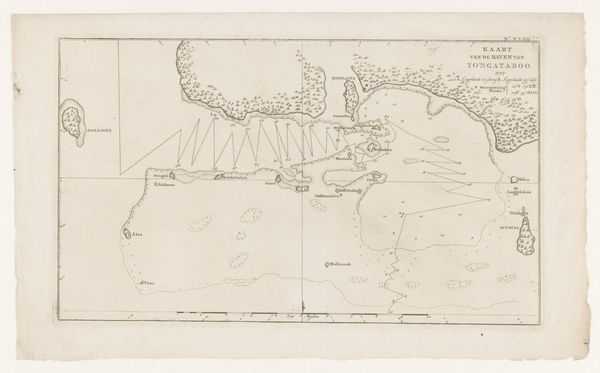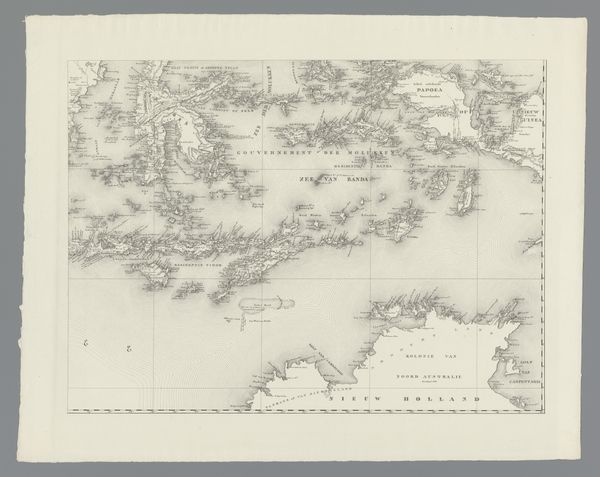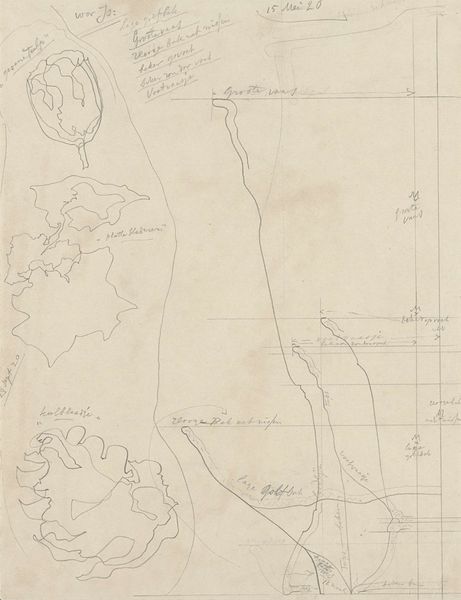
drawing, paper, pencil
#
drawing
#
landscape
#
paper
#
pencil
#
cityscape
#
realism
Copyright: Rijks Museum: Open Domain
Curator: Welcome. We are standing before Cornelis Vreedenburgh's "Gezicht op een drukke straat," a pencil drawing on paper, dated sometime between 1890 and 1946 and currently held at the Rijksmuseum. Editor: It's immediate impact is one of restless energy—the sketchy lines suggest movement and the feeling of being surrounded by crowds in an urban space. It really does capture the quick, fleeting essence of city life. Curator: Yes, and consider how Vreedenburgh uses a predominantly linear style. The sketch prioritizes form and the delineation of space rather than employing shading for volume. There's a conscious structuring of the composition through these lines, especially with respect to the distribution of figures across the page. Editor: It's interesting that you point out that emphasis on form, since the lack of detail also has a democratizing effect. We see types—generic figures populating an urban scene. It speaks to the homogenization inherent in industrial and urban life, even then. You wonder who these people are, where they’re going, and what socio-economic forces are driving their movement. Curator: While I acknowledge your interpretation, it's crucial to consider the formal artistic traditions that influence this work. The quick lines can also be understood as the artist searching for the perfect form to capture on paper. It shows an artistic intent. It reflects Vreedenburgh’s concern with achieving an aesthetic result, playing with the interplay of light and shadow. Editor: I don’t deny the technique on display. Yet I believe such works should be considered from various perspectives. What does this type of drawing mean at a time of such intense urban growth and migration? Doesn't that historical reality give extra depth? Curator: Certainly, historical factors influence any artist, but I caution against prioritizing context at the expense of form, which ultimately creates meaning through design. Editor: I suppose it comes down to a matter of emphasis. But it's hard not to think about this street scene, so deftly captured, as more than just the rendering of form. It shows the human cost and constant change inherent to a vibrant yet often indifferent modern landscape. Curator: Fair enough. Perhaps both approaches offer paths toward greater understanding and interpretation.
Comments
No comments
Be the first to comment and join the conversation on the ultimate creative platform.
